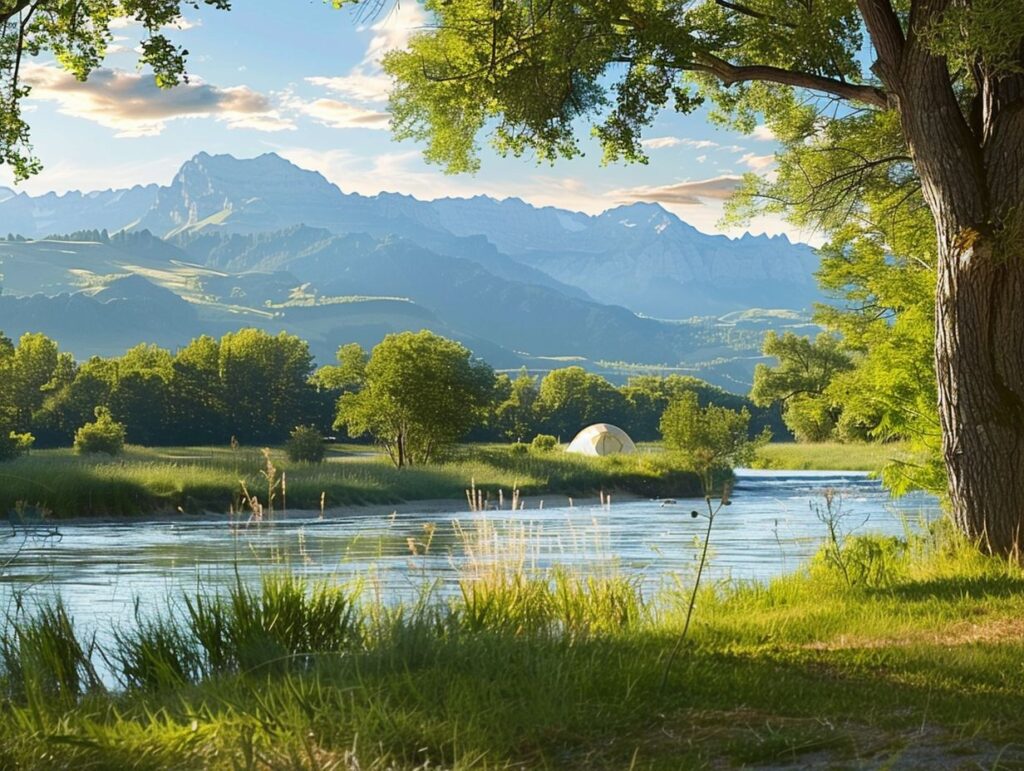Camping in national parks offers a unique opportunity to immerse yourself in the beauty of nature and wildlife. From affordable accommodation options to access to outdoor activities and educational opportunities, there are numerous benefits to exploring these natural wonders.
However, there are also drawbacks to consider, such as limited amenities, crowded campgrounds, and strict rules and regulations. To make the most of your camping experience, it’s important to research and plan ahead, pack appropriately, and be mindful of wildlife.
Discover some popular national parks for camping, such as Yosemite, Grand Canyon, Yellowstone, and Great Smoky Mountains, and start planning your next outdoor adventure today.
Key Takeaways:
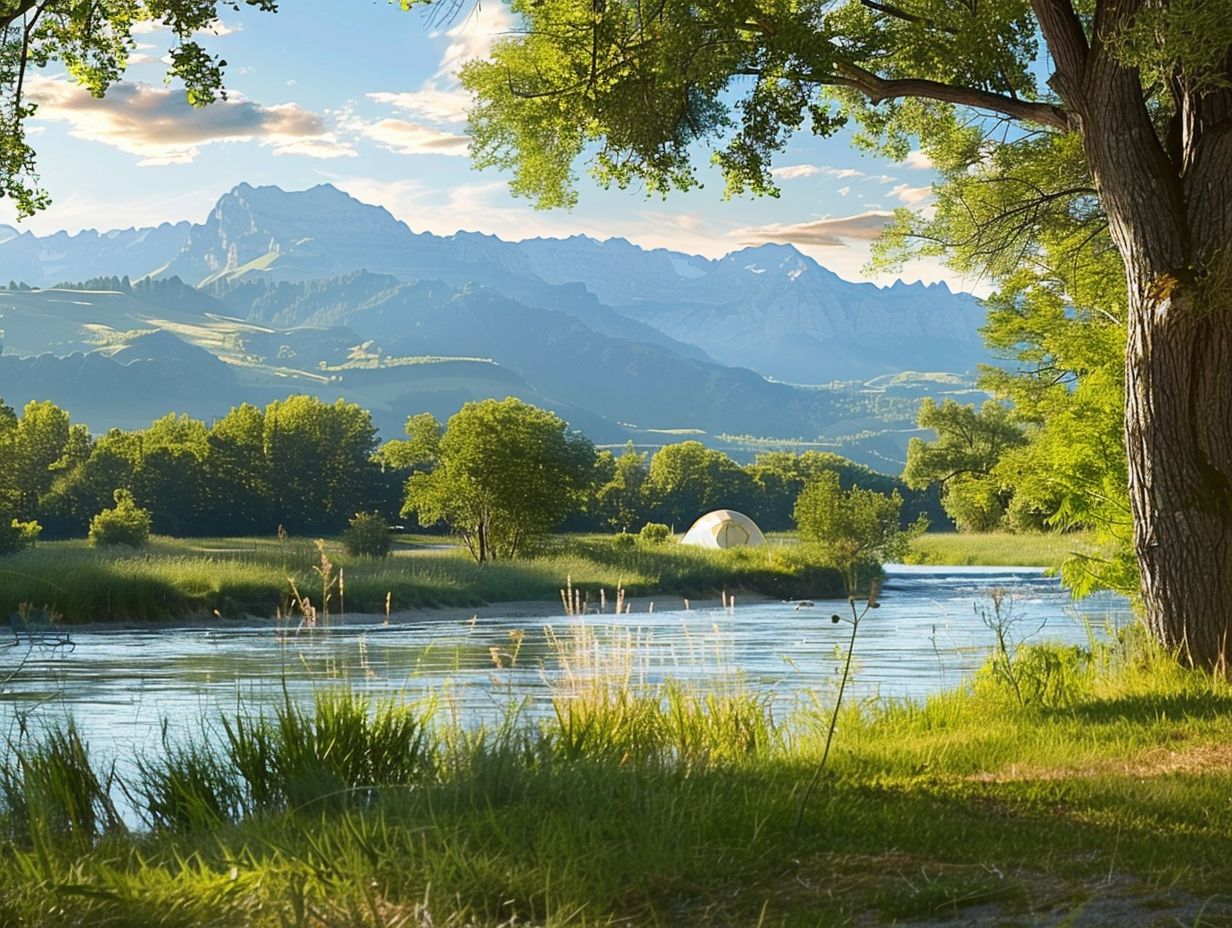
- Camping in national parks offers a close proximity to nature and wildlife, making it a great option for nature lovers and outdoor enthusiasts.
- While affordable, camping in national parks may come with limited amenities, crowded campgrounds, and strict rules and regulations.
- Proper preparation and research is key to a successful camping trip in national parks, including following park rules and being mindful of wildlife.
What Are the Benefits of Camping in National Parks?
Camping in national parks presents a myriad of advantages, encompassing the opportunity for individuals to fully engage with nature, observe a diverse array of wildlife, and participate in a variety of outdoor activities, all while appreciating the distinctive beauty inherent to these safeguarded regions.
As asserted by Chelsea Gonzales of Orlando, these experiences possess qualities that are simultaneously revitalising and enlightening.
1. Close Proximity to Nature and Wildlife
One of the principal advantages of camping in national parks is the close proximity to nature and wildlife, which allows visitors to observe a wide variety of species in their natural environments.
Surrounded by dense forests, towering mountains, and pristine lakes whilst camping, individuals have an unparalleled opportunity to witness the richness of biodiversity up close. It is not unusual to catch a glimpse of majestic elk grazing in the meadows or to hear the melodious songs of diverse bird species reverberating through the trees.
National parks harbour a diverse range of unique ecosystems, from the vibrant coral reefs of marine parks to the ancient redwood forests found in coastal regions, providing an opportunity to engage with the interconnectedness of all living beings in a profound and immersive manner.
2. Affordable Accommodation Options
Camping within national parks offers cost-effective accommodation choices, thereby enhancing accessibility for a diverse range of visitors and contributing positively to local economies through tourism.
Many travellers perceive camping as a budget-friendly substitute for conventional lodging options like hotels or resorts. Due to campsite fees typically being considerably lower than hotel room rates, camping enables visitors to manage their travel expenses more effectively.
This cost-effectiveness not only serves the interests of individual travellers but also carries significant economic implications for the local communities surrounding national parks.
As an increasing number of visitors embrace camping, businesses in these vicinities, including local shops, restaurants, and tour agencies, witness a rise in revenue, instigating a ripple effect of economic expansion.
Companies such as NW Adventure Rentals in Seattle provide RV hire services, furnishing an added degree of comfort and convenience for campers seeking to enrich their outdoor escapades.
3. Access to Outdoor Activities and Adventures
National parks present a wide array of outdoor activities and adventures, ranging from hiking and kayaking to wildlife observation, offering limitless opportunities for individuals with a passion for exploration.
Engaging in the exploration of the rugged hiking trails that meander through towering redwoods and cascading waterfalls, or taking part in thrilling water sports such as white-water rafting down turbulent rapids, are just a couple of the exhilarating experiences that await visitors.
For those desiring a more intimate interaction with nature, wildlife tours provide the opportunity to observe magnificent creatures in their natural habitats. Establishments like KOA campgrounds in the Pacific Northwest cater to RV campers and outdoor enthusiasts, providing convenient amenities and a comfortable hub for venturing out to discover the marvels of the national parks.
4. Educational Opportunities
Camping in national parks provides numerous educational opportunities for visitors to gain insights into conservation efforts, biodiversity, and ecosystem functions, with guidance from experts such as Jacqueline J.
These structured educational programmes aim to offer visitors a profound comprehension of the intricate harmony existing in these natural habitats. Park rangers and conservationists assume pivotal roles in leading interpretive tours, imparting their expertise and dedication to conserving the diverse ecosystems of the park.
Through engaging visitors and emphasising the interconnectedness of all living organisms, these professionals cultivate a sense of stewardship and obligation towards safeguarding the Earth’s natural resources.
Through guided excursions, informative discussions, and interactive presentations, visitors are motivated to take concrete actions and contribute positively to the preservation of the environment.
What Are the Drawbacks of Camping in National Parks?
1. Limited Amenities and Services
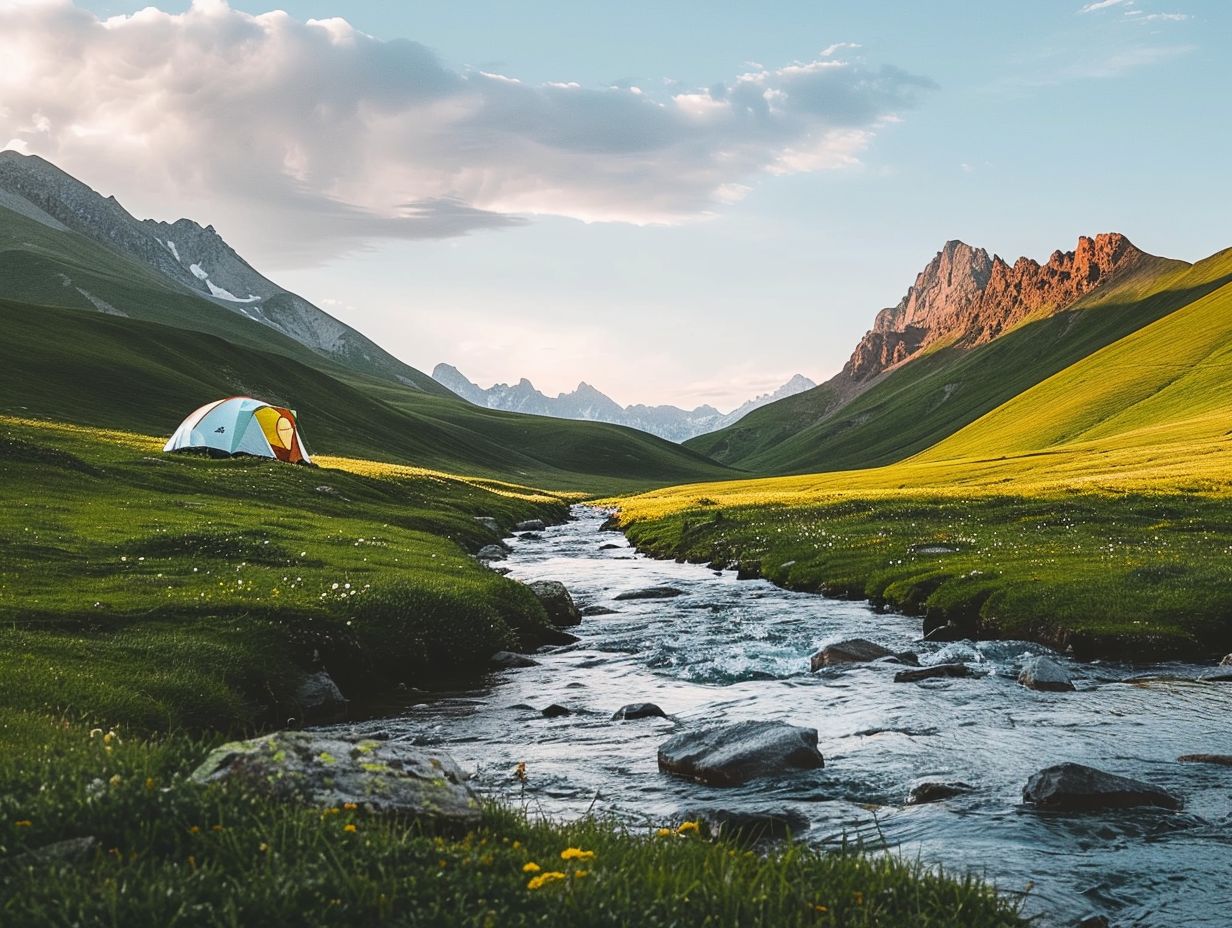
An inherent limitation of camping within national parks is the restricted availability of amenities and services, presenting potential challenges for individuals accustomed to more developed camping facilities.
National parks offer unparalleled natural beauty and an opportunity to disconnect from the rigours of daily life; however, campers must anticipate the absence of certain conveniences.
Numerous national parks lack access to electricity, necessitating the inclusion of portable chargers or power banks to ensure the charging of electronic devices. Similarly, the unavailability of running water in some locations mandates campers to carry additional water supplies for consumption, cooking, and sanitation purposes.
Restroom facilities may be scarce or require extended walking distances, underscoring the importance of packing personal hygiene items and adequate supplies of toilet paper.
2. Crowded Campsites
During peak seasons, numerous national parks face the issue of crowded campgrounds, which can diminish the overall visitor experience and create difficulties in securing reservations.
The challenges presented by overcrowded campgrounds are multifaceted, encompassing issues such as elevated noise levels that can disrupt sleep and relaxation, as well as limited space that may result in feelings of confinement and discomfort.
Additionally, reduced privacy is a common concern, as campers may find themselves in close proximity to others with minimal personal space. To effectively address these challenges and ensure a more pleasant camping experience, it is imperative to engage in proactive planning and secure reservations well in advance.
Conducting research to identify quieter campgrounds or less popular visitation times can also mitigate issues related to overcrowding and enhance the overall tranquillity of outdoor excursions.
3. Strict Rules and Regulations
Camping within national parks typically entails adherence to a strict set of rules and regulations established to safeguard the environment and ensure the well-being of all park visitors. These regulations play a pivotal role in the preservation of the delicate ecosystems encompassed by the park boundaries.
Commonly, restrictions on campfires are instituted to mitigate the risk of inadvertent wildfires that could have detrimental effects on the local flora and fauna. Moreover, guidelines concerning waste disposal serve to uphold cleanliness standards and prevent the pollution of natural habitats.
Enforced quiet hours aim to minimise disruptions to wildlife and afford visitors a serene environment to appreciate the natural beauty without disturbances.
Adherence to these regulations allows visitors to contribute to the sustainability and enduring preservation of the park environment, ensuring its enjoyment by future generations.
4. Potential for Dangerous Wildlife Encounters
Camping in national parks comes with inherent risks, one of which is the potential for dangerous wildlife encounters that can present significant safety hazards to campers. Encounters with wildlife, including bears and mountain lions, are not uncommon in these natural environments.
To mitigate the likelihood of such encounters, it is imperative to adhere to safety protocols. Properly storing food to prevent attracting animals is essential. When hiking, making noise can alert wildlife to your presence.
Should an encounter with a wild animal occur, it is advisable to remain composed, slowly retreat while avoiding direct eye contact. By demonstrating respect towards wildlife and maintaining a safe distance, the well-being of both visitors and the animals they come across is ensured.
How to Prepare for Camping in National Parks?
Effective preparation is essential for a successful camping trip in national parks. This involves thorough research, careful planning, and strict compliance with park regulations and guidelines to ensure a safe and enjoyable experience.
1. Research and Plan Ahead
Ahead of setting off on a camping trip in national parks, it is vital to engage in thorough research and careful planning, which includes making essential reservations well in advance. Fully researching the park’s features, such as walking trails, wildlife viewing areas, and notable points of interest, can improve the quality of your visit.
Additionally, a thorough understanding of the current weather conditions in the area is essential for choosing and packing suitable equipment and clothing. Moreover, assessing the available facilities, such as camping sites, toilet amenities, and other services, can greatly improve the comfort and convenience of your camping adventure.
To secure a suitable camping spot, it is recommended to book campsites online or by phone well in advance. Creating a detailed schedule that includes planned activities and set timelines will make for a smooth and pleasant camping experience, allowing you to explore nature’s beauty in an orderly way.
2. Pack Appropriately
Preparing adequately for a camping excursion in national parks entails assembling essential gear and supplies tailored to the specific activities and environmental conditions of the park.
Vital items to include in one’s packing list comprise a durable tent, sleeping bag, camping stove, and water purification system to address shelter and foundational requirements.
Additionally, it is imperative to pack suitable clothing reflecting the variable weather conditions, such as moisture-wicking layers, waterproof outerwear, and robust hiking boots.
In preparing for unforeseen circumstances or unfamiliar surroundings, safety equipment like a first aid kit, headlamp, and navigation tools are critical.
Including non-perishable food items, snacks, and a water bottle in one’s provisions will sustain energy levels throughout outdoor endeavors. Thorough preparedness ensures a secure and gratifying camping experience within any national park setting.
3. Follow Park Rules and Regulations
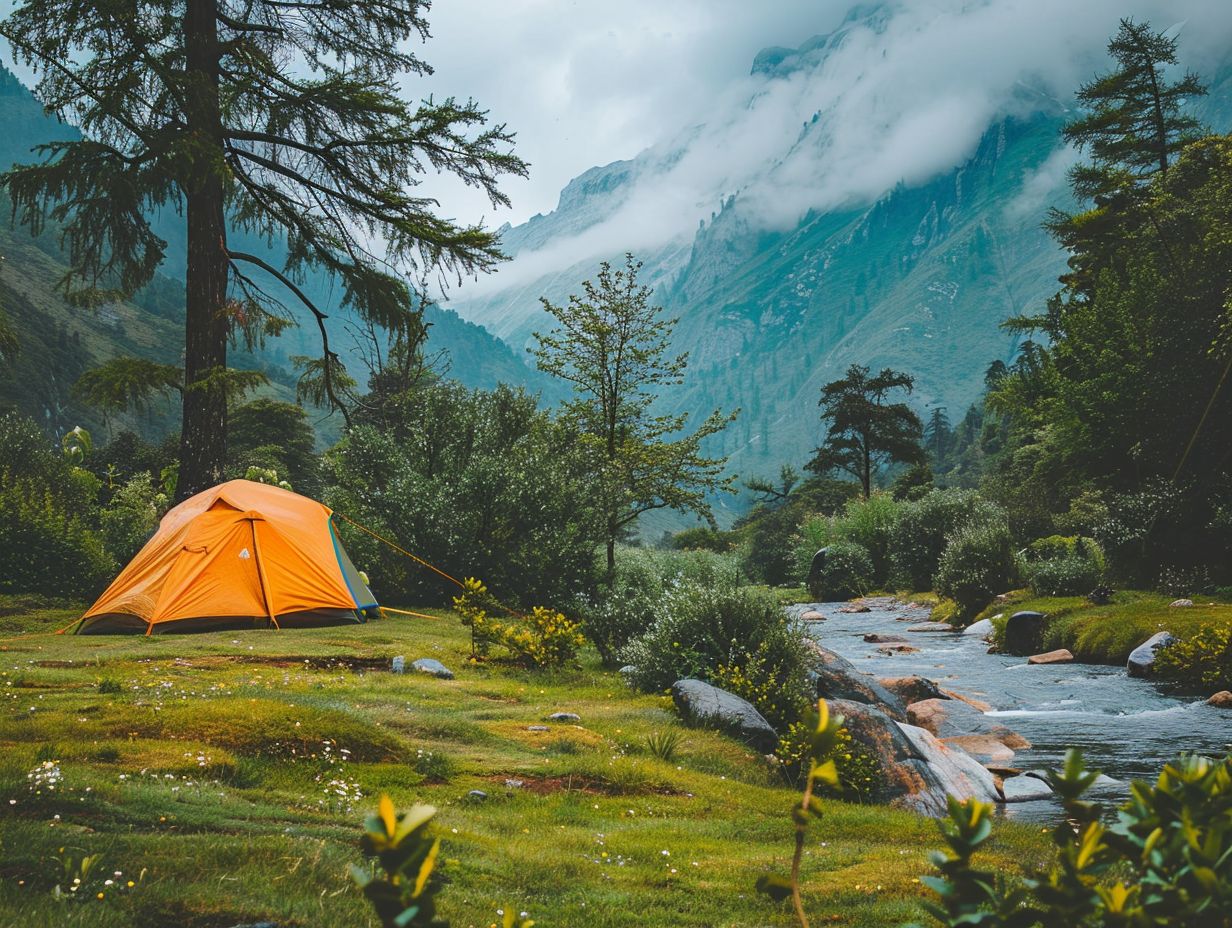
It is imperative to adhere to park rules and regulations for the conservation of natural resources and to ensure a positive visitor experience for all individuals.
Park regulations encompass a wide range of aspects that are fundamental in maintaining the ecological balance of the park and safeguarding its diverse flora and fauna. Proper waste disposal practices are essential for preventing pollution and preserving the natural beauty of the park’s surroundings.
The implementation of campfire safety guidelines is crucial to mitigate the risk of wildfires that could potentially devastate the park’s ecosystem. Rules pertaining to wildlife protection are designed to safeguard the natural habitats of animals and ensure that they are not disrupted by human activities.
Compliance with these regulations by visitors plays a pivotal role in contributing to the sustainability and longevity of the park, allowing future generations to appreciate and enjoy its natural splendour.
4. Be Mindful of Wildlife
It is imperative to exercise caution and mindfulness towards wildlife when camping in national parks. This practice not only safeguards the animals and their habitats but also ensures the safety of visitors. Responsible wildlife observation entails maintaining a safe distance from animals to prevent causing them stress or disrupting their natural behaviours.
It is vital to abstain from feeding wild animals as it can interfere with their natural diet and reliance on humans.
Additionally, minimising loud noises, abrupt movements, and refraining from approaching nesting sites is essential to minimise disturbances to wildlife. Conservation ethics underscore the significance of practising Leave No Trace principles, which includes refraining from littering, only capturing photographs, and avoiding removal of any items from the park.
Adhering to these guidelines enables visitors to make a positive contribution towards preserving the delicate ecological balance in nature.
Frequently Asked Questions
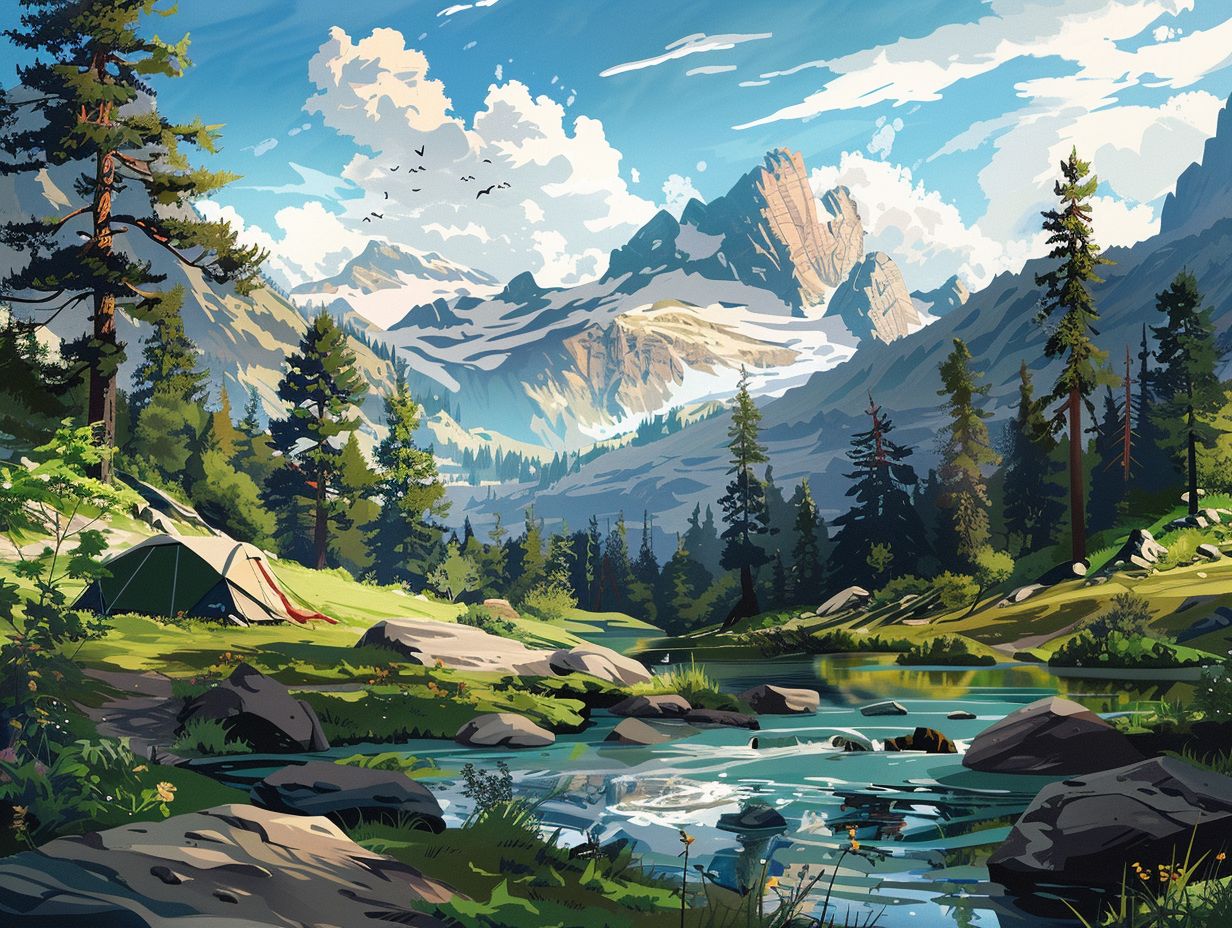
What are the benefits of camping in national parks?
Camping in national parks allows you to immerse yourself in nature and disconnect from technology and city life. It also provides opportunities for hiking, wildlife viewing, and star gazing.
What are the potential downsides of camping in national parks?
Some potential downsides of camping in national parks include limited amenities, unpredictable weather, and potential encounters with wildlife. There may also be camping fees and reservations required for popular campgrounds.
Are there any rules or regulations to be aware of when camping in national parks?
Yes, each national park has its own set of rules and regulations for camping. These may include designated campsites, maximum stay limits, and restrictions on campfires and food storage. It is important to research and follow the rules to protect the park and ensure a safe and enjoyable experience.
Can I camp in any national park?
While there are over 400 national parks in the United States, not all of them offer camping opportunities. Some parks may not have campgrounds or may only allow camping in designated areas. It is important to research ahead of time to determine if your desired national park has camping available.
What are some tips for a successful camping trip in a national park?
Some tips for a successful camping trip in a national park include packing appropriate gear and supplies, following Leave No Trace principles, being prepared for weather changes, and respecting the natural environment and wildlife. It is also a good idea to make reservations in advance and arrive early to secure a campsite.
Are there any alternatives to camping in national parks?
Yes, some national parks offer alternative lodging options such as cabins, lodges, and RV hookups. Additionally, nearby towns may have hotels or vacation rentals available. However, camping is often the most affordable and immersive way to experience a national park.

